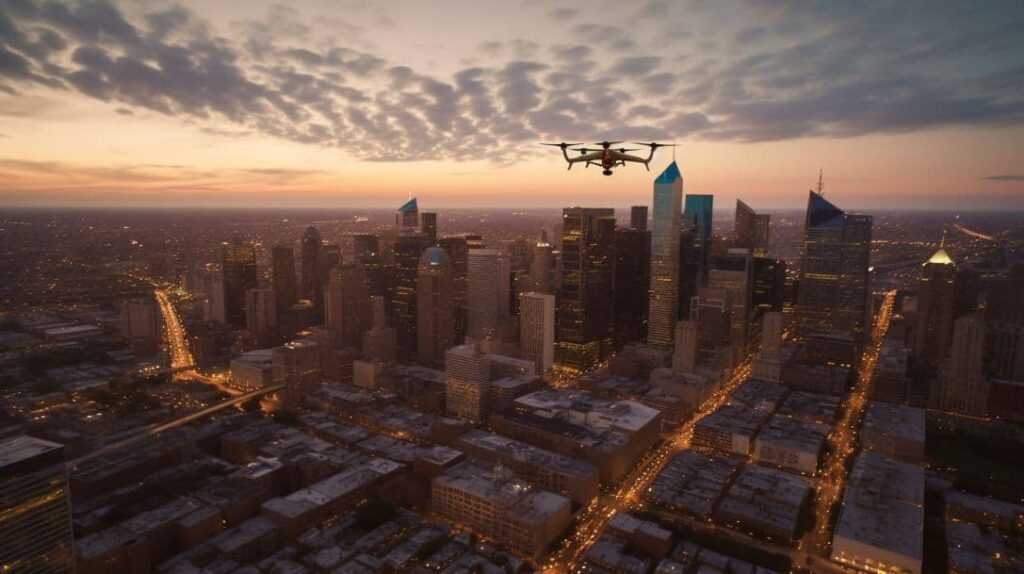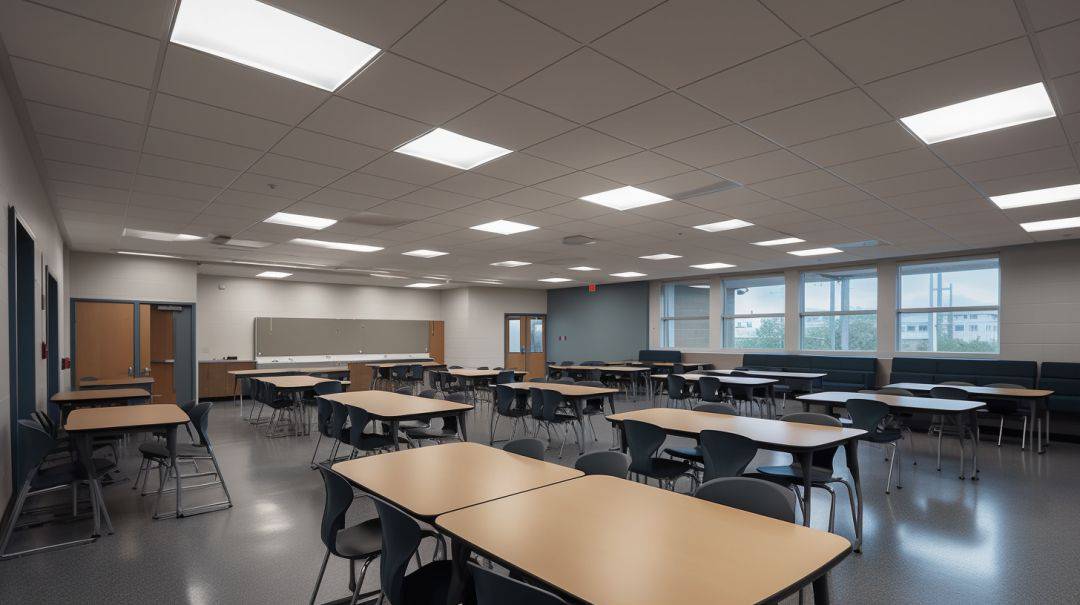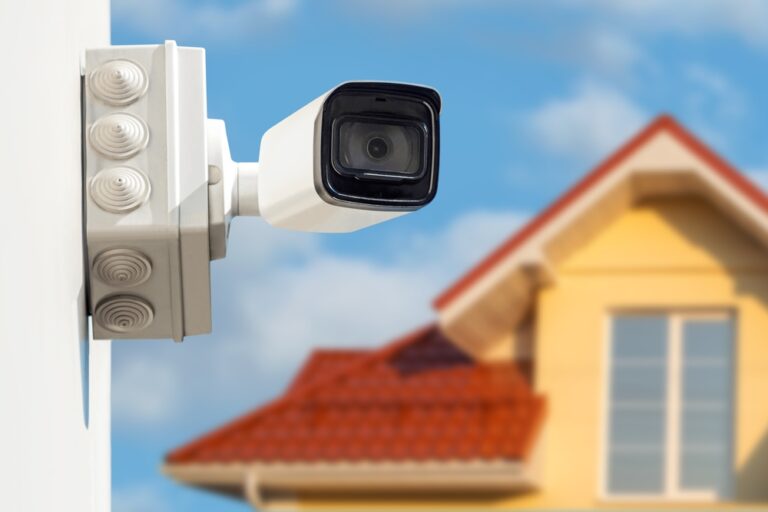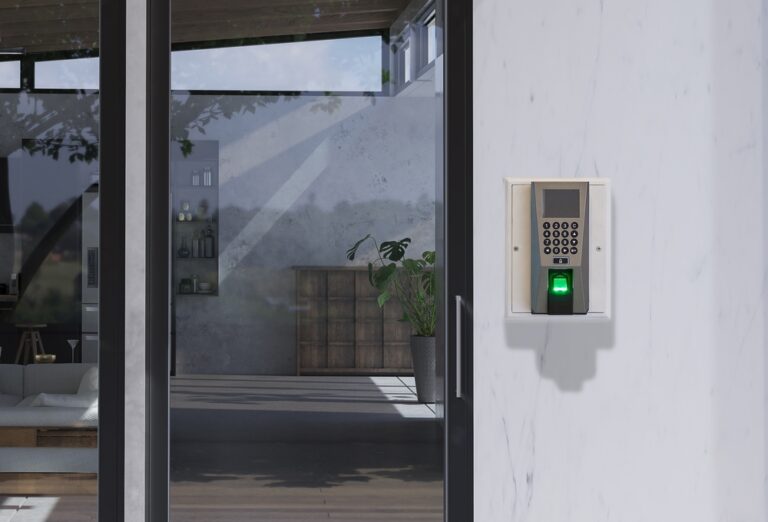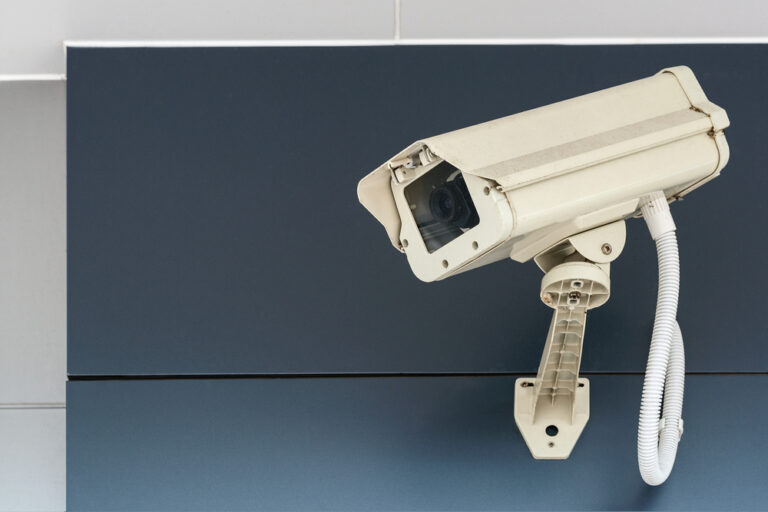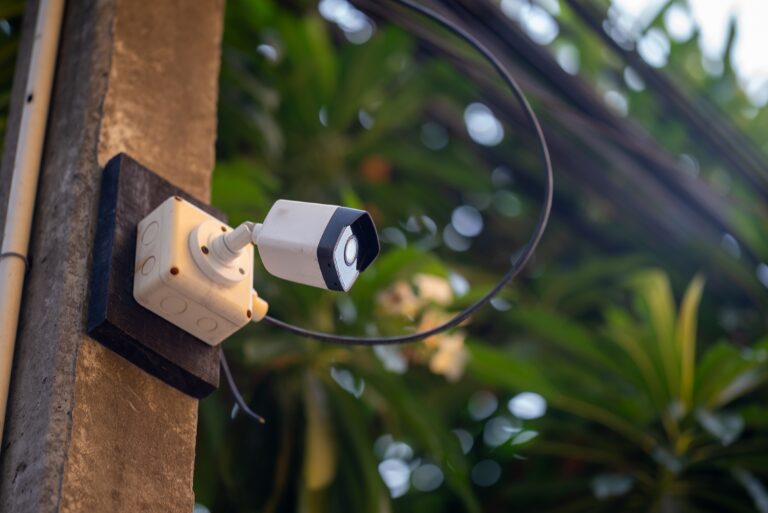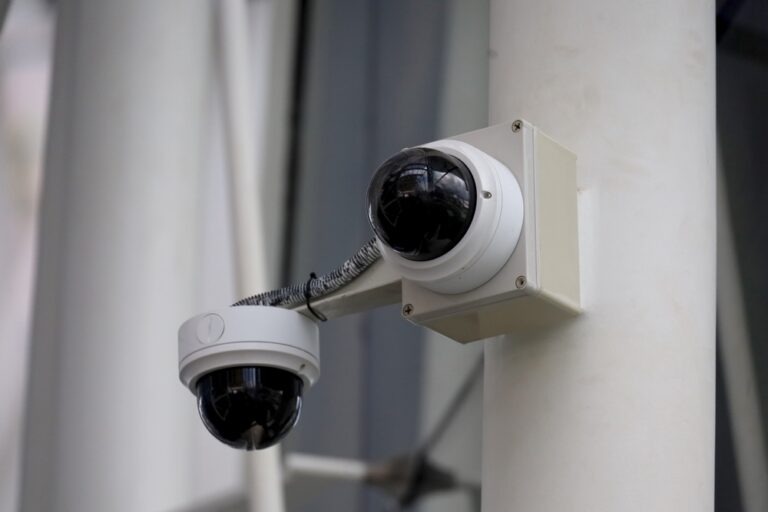- 1) Introduction
- 2) Understanding the Role of Surveillance in Urban and Suburban Philadelphia
- 3) Challenges and Requirements for Effective Surveillance
- 4) Assessing Urban and Suburban Philadelphia Environments
- 5) Exploring Surveillance Technologies
- 6) Developing a Tailored Surveillance Strategy for Urban Philadelphia
- 7) Surveillance Strategies for Businesses in Urban Philadelphia
- 8) Optimizing Surveillance for Suburban Philadelphia Environment
- 9) Securing Suburban Philadelphia Homes and Land
- 10) Unifying Surveillance Across Diverse Environments
- 11) Navigating Legal and Ethical Considerations
- 12) Best Practices for Surveillance Installation
- 13) The Future of Urban and Suburban Surveillance
- 14) Concluding Thoughts on Optimized Surveillance
-
15)
FAQs
- 15.1) How do you determine the right camera types and counts for an area?
- 15.2) What strategies maintain surveillance effectiveness outdoors?
- 15.3) How is camera footage securely accessed remotely?
- 15.4) What insights do video analytics provide?
- 15.5) How can businesses balance security with customer privacy?
Introduction
Implementing effective security measures requires an understanding of the unique needs and conditions of the environment. For organizations serving Philadelphia and the surrounding suburban counties, tailored surveillance is crucial.
Urban areas like Philadelphia present distinct challenges and priorities compared to the suburbs and rural communities of Montgomery County. By examining key factors like population density, terrain, crime rates and accessibility, security professionals can gain insight into how best to enhance safety for residents and businesses in these different settings.
This in-depth article provides a strategic guide to optimizing surveillance approaches specifically for urban and suburban Philadelphia. We will explore the technologies, installation practices and data management strategies that allow security networks to adapt to emerging threats and innovations.
With a lens on legal considerations and ethics, we aim to uncover best practices for implementing preventative surveillance measures that provide coverage, deter crime and instill community trust. The goal is to equip security providers with the knowledge to make informed choices when securing commercial properties, residential spaces and public areas across diverse neighborhoods.
By understanding the unique landscape, risks and needs of urban and suburban Philadelphia, security professionals can become strategic partners in enhancing safety for all. Let’s begin by examining key differences in the purpose and requirements of surveillance between dense city centers and sparsely populated suburbs.
Understanding the Role of Surveillance in Urban and Suburban Philadelphia
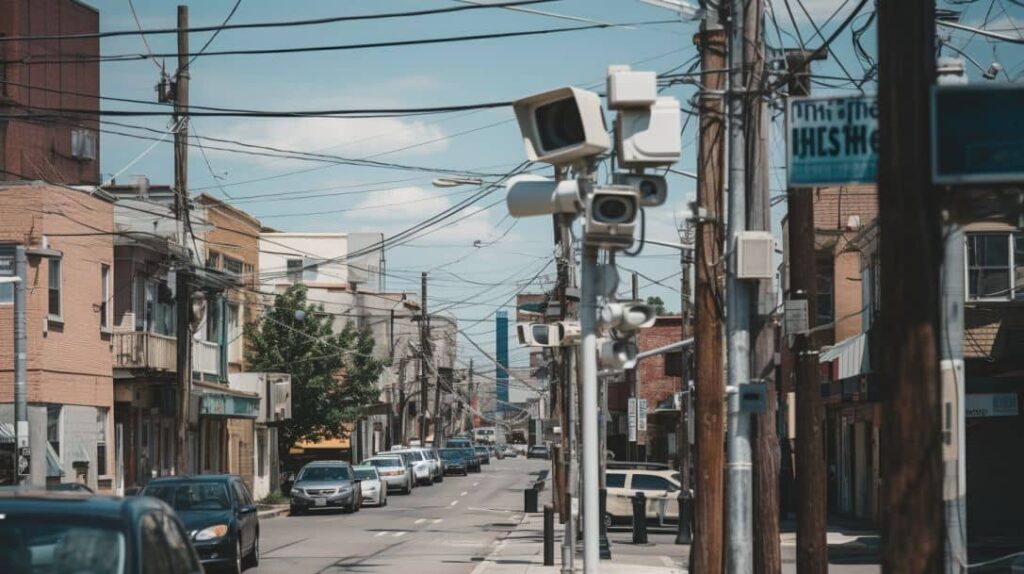
Surveillance serves a vital role in enhancing security, yet its specific objectives and benefits can vary greatly between urban and suburban environments. By examining the core purpose of surveillance and how it contrasts between densely populated cities and sparse suburbs, security professionals can gain critical insights.
The General Role and Objectives of Surveillance
At its core, surveillance aims to provide visibility and actionable information to protect people, assets and property. The fundamental goals of a surveillance system include:
- Deter Crime: Cameras, security lighting and other measures create awareness that premises are monitored, dissuading criminal activity.
- Enhance Safety: Surveillance helps identify threats and dispatch aid faster during emergencies or accidents.
- Secure Assets: Monitoring valuables, inventory, equipment, documents or other assets protects against theft and misuse.
- Access Control: Managing and recording access to buildings, gates and other entry points enhances accountability.
- Incident Response: Surveillance footage from before, during and after an incident provides critical evidence to aid investigations.
- Liability Protection: Documenting incidents on premises provides evidence in the event of lawsuits or claims.
- Remote Monitoring: Enabling eyes-on-target from any location expands monitoring capacity.
Effective surveillance requires aligning systems, policies and procedures to meet the specific objectives and priorities for a given environment.
Contrasting Primary Surveillance Goals: Urban vs. Suburban
While surveillance aims to enhance safety universally, urban and suburban areas often have differing priorities for their security programs:
- In densely populated urban areas, priority goals tend to include deterring violent crimes against people, securing high-value assets, and monitoring public areas to maintain order.
- For suburban environments, top surveillance objectives typically emphasize preventing property crimes like burglary and theft. Monitoring perimeter access points and extensive grounds is also a major priority.
- Privacy concerns are heightened in crowded cities, so urban surveillance stresses responsible data practices and transparency in areas covered. Suburban systems focus more on covering large, sparsely populated grounds.
- Cost-effectiveness, flexibility and easy integration with law enforcement systems are key in cities with budget constraints. Suburban surveillance favors longevity and customization for specific risks like fires or floods.
By recognizing these core distinctions, security directors can orient surveillance to align with the specific priorities and conditions of urban and suburban environments. This informs technology choices, system design, policies and integration with first responders.
Challenges and Requirements for Effective Surveillance
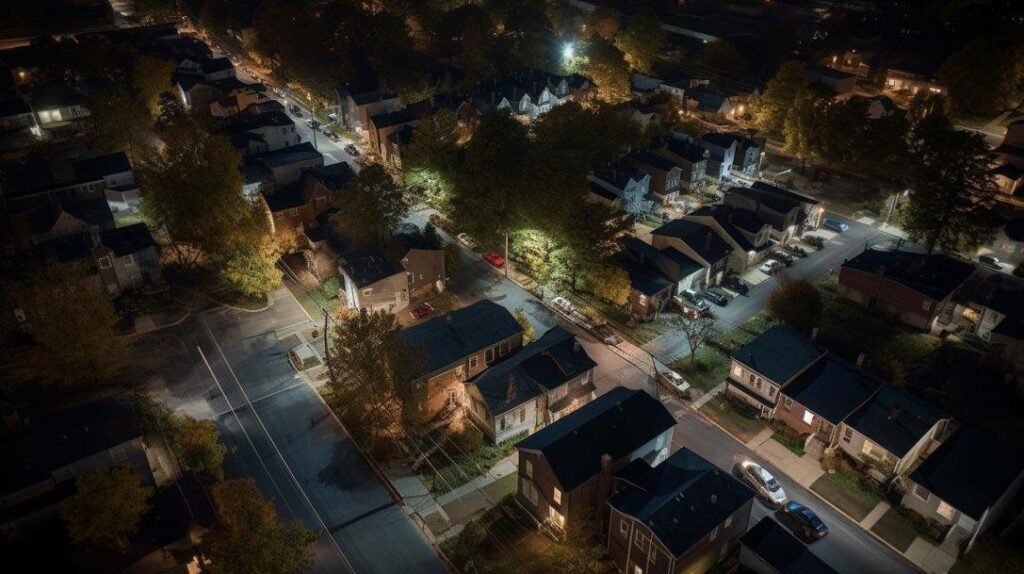
Deploying well-designed surveillance networks requires examining the unique challenges and key requirements presented by urban and suburban environments. By understanding limiting factors and needed capabilities in each setting, security teams can select solutions tailored to address specific risks.
Common Challenges in Urban and Suburban Areas
While urban and suburban areas pose distinct issues, some persistent challenges exist across environments:
- Lighting conditions – Changing light, shadows and glare can impact video quality and visibility. Low light in rural areas also presents challenges.
- Weather – External cameras must withstand heat, cold, rain and wind. Corrosion near oceans adds difficulty.
- Camera visibility – Concealing cameras while still providing useful views requires careful placement.
- Power supplies – Running power to cameras in remote or existing buildings can be complex and costly.
- Large and difficult terrain – Rural, commercial, and residential areas may have expansive spaces needing coverage.
- Privacy concerns – Any environment with people needs safeguards to protect civil liberties.
- System integration – Connecting new and legacy equipment from various vendors poses hurdles.
Anticipating these shared challenges during planning helps choose proven solutions tailored for the environment.
Key Capabilities Needed in Urban vs. Suburban Settings
In addition to overcoming common hurdles, urban and suburban surveillance must meet core capability requirements:
Urban surveillance often requires:
- Wider area coverage with more cameras
- Vandal-proof and concealed camera housings
- Integration with law enforcement networks
- Low-light performance
- Video analytics for alerts and subject tracking
- Scalable data storage and cybersecurity
Suburban surveillance typically necessitates:
- Long-range, high-resolution camera optics
- Rugged cameras and housings for exposed areas
- Wireless transmission capability
- High-capacity edge storage at the camera
- Customizable motion detection settings
- Backup power options at the camera or facility
Evaluating challenges and requirements in each setting ensures systems meet current and future needs for optimal safety and security.
Assessing Urban and Suburban Philadelphia Environments

Optimizing surveillance for a specific area relies heavily on assessing key environmental factors that shape risks and system requirements. By analyzing population density, crime trends, terrain and accessibility in urban and suburban settings, security directors can inform major strategy decisions.
Population Density Drives Coverage Area and Camera Types
Population density has major implications for solving urban and suburban surveillance needs:
- Urban centers demand extensive coverage across crowded public areas, entry points, and perimeter boundaries. Higher camera counts are needed per square mile.
- Suburban areas require long-range observations of sparsely populated grounds and perimeter access roads. Fewer cameras cover more territory.
- Camera types also differ. Urban environments favor discrete dome cameras and video analytics to respect privacy in crowds. Suburbs often utilize more overt PTZ and multifocal cameras to cover open expanses.
By mapping out population density across the coverage area, camera counts, types and analytic needs become apparent.
Crime Trends Guide Tailored Prevention Strategies
Crime patterns in urban and suburban areas also inform the surveillance strategy:
- Urban centers see more violent crime and theft. Strategies should emphasize deterrence in public areas and access control for buildings.
- Suburban environments experience more property crime. Perimeter access control and remote monitoring are bigger priorities.
Integrating surveillance with crime mapping analytics can highlight high-risk areas. Focusing monitoring and patrols on these hot spots enhances crime prevention.
Geographic Terrain Impacts Technology Needs
The geographic terrain also shapes technology requirements:
- Urban surveillance must secure high-rise buildings, busy intersections, and underground metro areas. Solutions favor flexible camera placements and wireless connectivity.
- Suburban coverage must span lawns, perimeter fences, wooded areas, and access roads. Longer-range camera optics and sensors are ideal for these open spaces.
Factor in terrain accessibility as well. Remote rural areas will require more self-sufficient cameras with onboard storage and power.
Accessibility Informs System Infrastructure Needs
Accessibility considerations also impact infrastructure:
- Urban settings with extensive existing structures may limit wiring and power options. Wireless systems help overcome these hurdles.
- Suburban environments allow greater flexibility in wiring and placing equipment but require long transmission distances. Fiber optic cabling can connect distant cameras.
By evaluating key environmental factors, security directors can design surveillance aligned to the unique risks and conditions presented in urban and suburban areas.
Exploring Surveillance Technologies

Selecting the right surveillance technologies is crucial for addressing the distinct needs of urban and suburban environments. Security teams must evaluate various camera types, transmission infrastructure, and video management platforms based on the area’s population density, terrain, crime trends and accessibility challenges. By understanding solution capabilities and limitations, informed decisions can be made.
Comparing Fixed vs. PTZ Cameras
Fixed surveillance cameras provide continuous monitoring of a preset area, while PTZ (pan-tilt-zoom) cameras allow operators to actively control the field of view.
- Urban environments tend to favor more fixed cameras to maximize coverage of public spaces, building entries and perimeter fences. Their simple installation also aids large-scale deployments.
- Suburban and rural areas benefit from PTZ cameras to actively track activity across open expanses and zero in on events unfolding at a distance. Their versatility suits lower-density coverage needs.
Megapixel and Multifocal Cameras Expand Coverage
Megapixel cameras, with 5MP or higher resolution, provide wide-area monitoring from fewer units compared to standard definition cameras. Multifocal cameras offer simultaneous wide, medium and narrow views.
- Crowded urban settings favor these technologies to widen coverage, especially in high-traffic areas. Their high-resolution aids in subject identification.
- For suburban installations covering open spaces, megapixel and multifocal models provide expanded visibility from strategic positions. Their zoom capability also helps.
Wireless Systems Provide Flexible Urban Surveillance
Wireless cameras utilize WiFi or cellular signals to transmit video, removing the need for cable runs. Mesh networks allow camera-to-camera connections.
- In urban areas with many obstructions, wireless systems allow flexible camera placements that work around existing infrastructure.
- Suburban sites are less constrained, but wireless systems can still reduce installation costs compared to trenching cable.
Fiber Optic Networks Enable Long-Range Connections
Fiber optic cabling provides high-bandwidth, long-distance transmission of video and control signals via light signals in the cable.
- Urban centers may utilize fiber backbones to connect systems across a large area and provide scalable capacity.
- For suburban camera networks across expansive grounds, fiber optic cabling delivers fast connections.
By choosing technologies matched to urban and suburban conditions, surveillance can effectively enhance security across diverse environments.
Developing a Tailored Surveillance Strategy for Urban Philadelphia
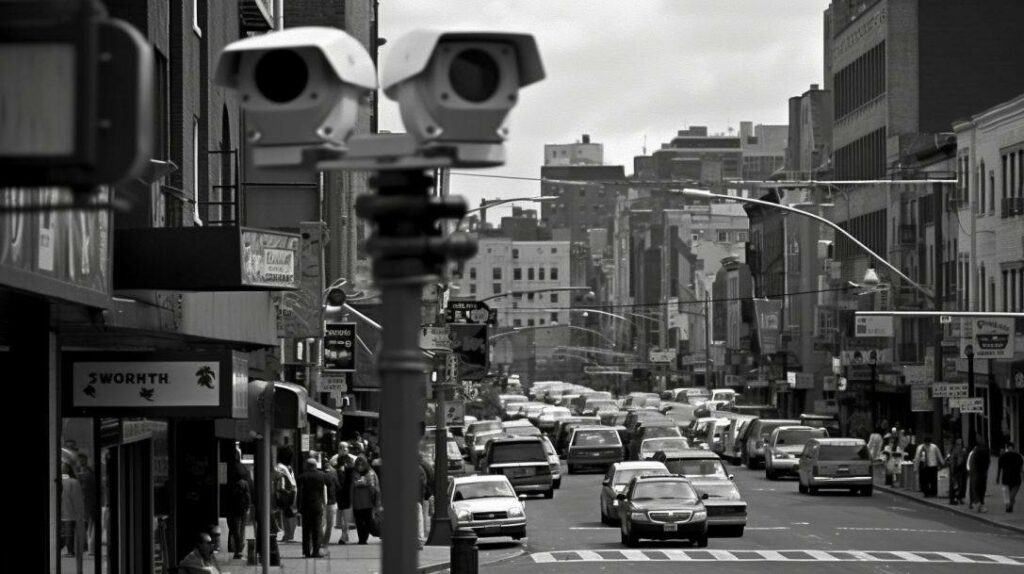
Urban centers like Philadelphia present unique challenges for surveillance systems including high-density populations, violent crime, and dense built environments. By taking a tailored approach optimized for these specific conditions, organizations can enhance safety while respecting citizen privacy.
Scaled Coverage Across a Densely Packed City
Philadelphia’s large population and crowded urban terrain require extensive, scaled surveillance to monitor public spaces, transit hubs, businesses, and residential buildings. Adequate coverage involves:
- High-resolution cameras with advanced video analytics to track individuals through crowds and detect suspicious behavior without excessive personal data collection.
- Carefully positioned camera networks covering key hotspots identified through crime pattern analysis and community input.
- Monitoring priorities on locations with consistent public safety issues, not violating reasonable privacy expectations.
Responsible Data Practices Are Essential
Surveillance in crowded urban centers raises legitimate privacy concerns. Responsible policies and procedures are required, including:
- Posting visible notices in monitored public areas and limiting coverage to what is necessary.
- Having documented access controls, data retention rules, and usage audits.
- Fostering open communication with the community about the intent and scope of monitoring.
- Training monitoring staff on procedures and legal requirements.
Total System Integration Enhances Effectiveness
Philadelphia’s interagency collaboration and emergency response coordination depend on integrated surveillance capabilities. Crucial strategies involve:
- Allowing monitored access to video feeds among law enforcement, fire response and EMT services.
- Using common operating platforms to unify new and legacy surveillance infrastructure.
- Creating information-sharing practices to enhance incident preemption.
A tailored approach optimizes urban surveillance, balancing safety with responsible, ethical data usage.
Surveillance Strategies for Businesses in Urban Philadelphia
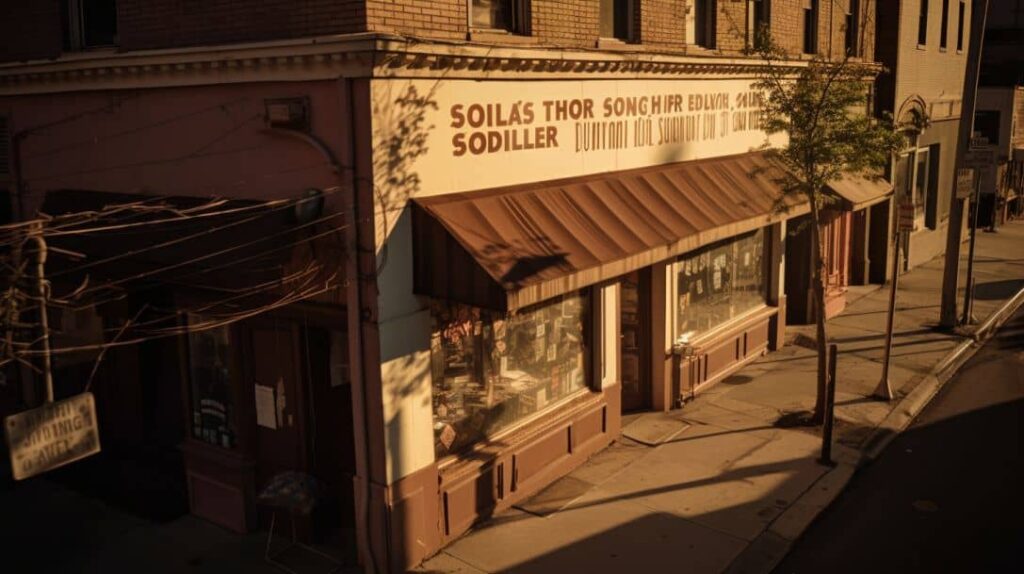
Urban business districts present prime opportunities for crime due to dense populations and accessibility. In cities like Philadelphia, tailored surveillance programs are crucial for securing facilities, assets, and people while respecting customer privacy.
Covering Multiple Building Entry Points
Philadelphia businesses often occupy large multi-story buildings with many public entrances, elevators, stairwells and lobby areas requiring adequate coverage. Strategies include:
- Positioning fixed dome cameras near entry/exit doors to capture face views without appearing intrusive.
- Monitoring elevator bays with wide-angle megapixel cameras to see all passengers.
- Using covert cameras only in sensitive areas like safes or computer rooms, avoiding customer areas.
Securing Perimeter Access and Vulnerabilities
Covering the full exterior perimeter requires identifying vulnerabilities:
- Use PTZ cameras to monitor parking areas, gates, loading docks and alley access.
- Ensure minimal blind spots by adding wireless cameras where wiring is difficult.
- Make sure building edges and rooftop equipment have no unmonitored access.
High-Resolution Monitoring of High-Value Assets
Within facilities, protect priority assets like safes, computer rooms, machinery and inventory with discrete but high-resolution coverage:
- Conceal cameras internally or in drop ceilings with only tiny pinhole lenses visible.
- Install access control with badge scanners or biometrics on sensitive room doors.
- Use mobile camera networks or drones to regularly survey large inventories.
Integrating Surveillance with Access Control

Cross-referencing surveillance video with access control systems adds accountability:
- Set access permissions based on employee credentials and monitor inappropriate attempts.
- Install turnstiles so all entries are physically channeled past cameras.
- Position access panels so PIN entry is clearly visible on the video.
Proactive surveillance tailored to urban risks enhances Philadelphia business security.
Optimizing Surveillance for Suburban Philadelphia Environment

Suburban areas like Montgomery County encompass expansive residential neighborhoods, industrial parks, and rural roads posing unique surveillance challenges. Tailored solutions must account for sparse coverage zones, variable lighting, and extended perimeter access.
Adapting Strategies for Lower Density
With larger coverage areas and distances between properties, suburban surveillance takes a flexible approach:
- Use more PTZ cameras to pan across wide angles and zoom in on distant activity.
- Employ wireless mesh networks for rapid repositioning of cameras as needed.
- Prioritize perpetual problem areas rather than comprehensive monitoring to optimize resources.
Illumination is Crucial for Low-Light Conditions
Suburban camera views often span unlit areas leading to poor night visibility:
- Install IR illuminators matched to camera models to brightly light nighttime fields of view.
- Choose camera models with low-light optimization like starlight or thermal sensors.
- Automatically activate floodlights when motion is detected to deter and capture events.
Long-Range Options for Monitoring Large Properties
Watching over large suburban lots and perimeter fences requires long-distance surveillance:
- Use HD motorized zoom lenses capable of clearly viewing subjects 100+ feet away.
- Install megapixel cameras (5MP or more) for high-resolution panoramas.
- Position cameras on tall posts for an elevated view over fences and foliage.
Robust Outdoor Equipment to Withstand Weather
Suburban cameras face more exposure to heat, cold, rain, and wind:
- Select vandal-resistant models rated for extreme temperatures.
- Use weatherproof housings like IP66-rated enclosures.
- Install hardened cabling rated for wet/direct burial.
With flexible coverage, visibility aids, and durable equipment, suburban surveillance can enhance security across expansive areas.
Securing Suburban Philadelphia Homes and Land

For suburban residential properties, tailored surveillance focuses on protecting homes from break-ins and monitoring large surrounding land. Philadelphia suburbs favor flexible systems that deter crime and enable remote monitoring.
Monitoring Vulnerable Entry Points
Fully covering a home’s perimeter requires securing common entry points:
- Install video doorbell cameras viewing front and back door areas.
- Use wireless mini-cameras discreetly mounted on garages, sheds and fence gates.
- Position larger PTZ cameras to view driveway turnarounds and side yard access.
Detecting Activity Across Large Yards
Wide-angle views of entire front and back yards enhance exterior security:
- Place tall pole-mounted cameras for an elevated view over fencing and foliage.
- Use motion-activated spotlights to automatically illuminate the yard at night when triggered.
- Enable motion detection alerts with clear visibility downside yards.
Remote Monitoring and Smart Home Integration
Connecting cameras to smart home systems enables control from anywhere:
- View live feeds and receive alerts on phones and tablets via WiFi.
- Integrate surveillance video into whole-home automation and awareness systems.
- Leverage cloud storage to retain and access footage remotely.
Specialized residential video solutions allow Philadelphia suburbanites to proactively protect homes and land.
Unifying Surveillance Across Diverse Environments
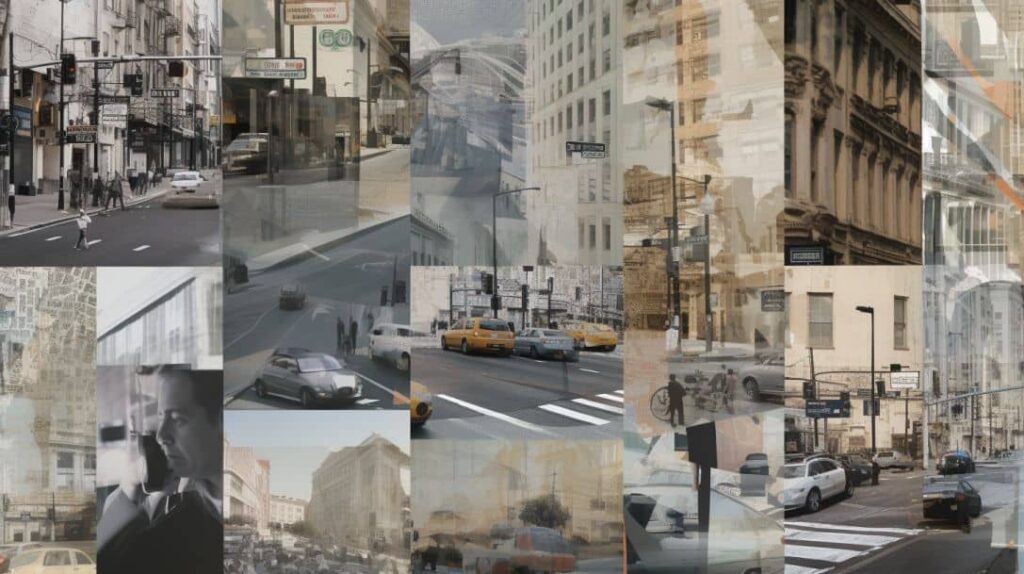
Optimizing security for the diverse conditions found in urban and suburban areas involves unifying surveillance technologies into integrated networks. A holistic approach enhances coverage, awareness and responsiveness across all terrains.
Blending Camera Technologies for Complete Coverage
Gaps arise when relying on single technology types for large areas with varying needs:
- Mix PTZ and fixed cameras to balance active monitoring and broad visibility.
- Include wireless and wired options to flexibly cover blindspots.
- Use varied lens types like wide-angle and telephoto to match views to each location’s need.
AI Analytics Enhance Threat Detection
Artificial intelligence (AI) analytics help operators sift through feeds and focus where needed:
- Behavior detection flags unusual loitering, crowding or access attempts.
- Face recognition can identify persons of interest across multiple cameras.
- Anomaly detection identifies normal patterns and alerts to deviations.
Centralized Control Rooms Tie All Feeds Together
Central command centers enable 24/7 monitoring of all networked cameras:
- Walls of displays show live views while recording continuously archives footage.
- Control room staff can quickly pinpoint camera locations and dispatch responses.
Interoperability and Common Standards
Newer systems leverage common standards for seamless unification:
- IP-based cameras easily connect over wired and wireless data networks.
- ONVIF standardization enables hybrid systems.
By blending solutions, surveillance can enhance security without leaving substantial gaps in the coverage of urban and suburban zones.
Navigating Legal and Ethical Considerations

Deploying surveillance systems in urban and suburban environments demands careful navigation of legal requirements and ethical obligations to the community. Responsible oversight preserves public safety while respecting freedoms and privacy.
Adhering to Laws and Ordinances
Local laws establish parameters for video monitoring in public and private settings:
- Transparency on where cameras are located and their capabilities is often mandatory.
- Consent may be required in certain private contexts like rentals.
- Public area laws determine if police permits are needed.
- Workplace policies must address employee surveillance.
Conducting Privacy Impact Assessments
Privacy assessments help determine appropriate monitoring:
- Evaluate surveillance necessity – can security be achieved through less invasive means?
- Mitigate personal data collection – mask identities unless required for an investigation.
- Provide open notice of surveillance technology uses.
Securing Data and Restricting Access
Responsible data policies also preserve privacy:
- Institute access controls to surveillance systems and footage.
- Establish data retention periods to delete non-essential footage.
- Use encryption to protect footage against unauthorized access.
Fostering Transparency and Trust
Community awareness builds understanding of program intent:
- Inform the public about surveillance program goals like deterrence.
- Create opportunities for local feedback on concerns.
- Restrict monitoring to areas with documented risks.
With sound policies and community engagement, surveillance programs can build trust and social value.
Best Practices for Surveillance Installation
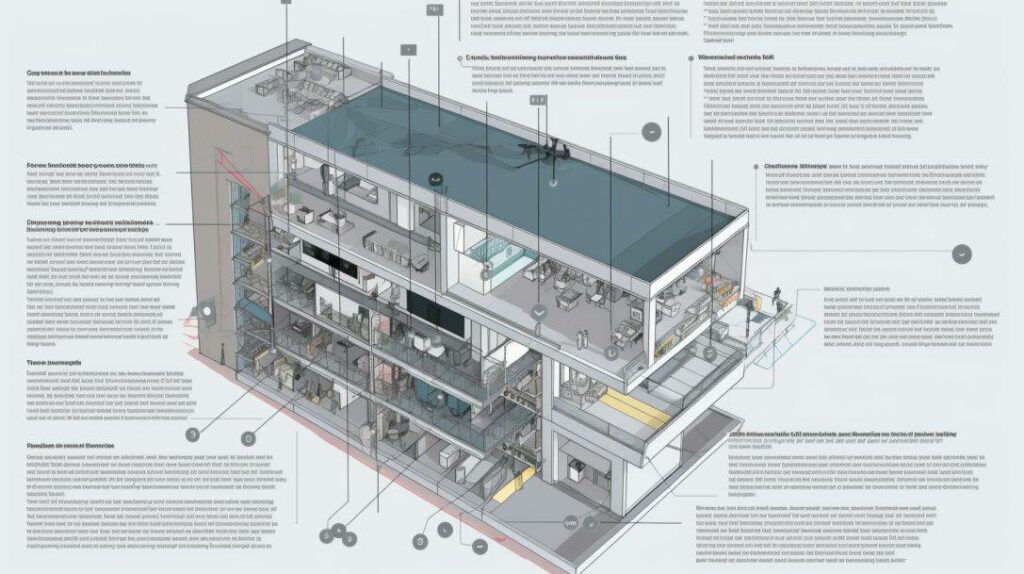
Proper installation is crucial for optimizing surveillance systems to overcome the diverse challenges of urban and suburban environments. Following best practices and diligent testing helps avoid common pitfalls.
Careful Camera Positioning
Camera placement should balance visibility needs with aesthetics:
- Mount cameras high with angled views to maximize coverage area.
- Conceal rooftop cameras in structures matching building design to remain discreet.
- Use vandal-proof enclosures and cabling when visibility cannot be avoided.
Addressing Power and Connectivity Challenges
Solve installation challenges creatively but safely:
- Use POE switches to provide power and connectivity via Ethernet cabling.
- For long wireless runs, install mesh network repeaters on buildings or poles.
- Employ DC power kits with solar panels and batteries for remote camera locations.
Weatherproofing and Securing Equipment
Properly seal and secure equipment against environmental hazards:
- Enclose PTZ cameras in weatherproof housings when not under an overhang.
- Use plenum-rated cabling for air duct or drop-ceiling installations.
- Padlock and mount network video recorders (NVRs) securely to deter theft.
Testing Cameras and Connectivity
Validate capabilities and coverage after deployment:
- Check camera views and remote access during the day and night.
- Confirm motion detection properly triggers alerts and recordings.
- Review video quality zoomed in and out to validate clarity.
Diligent installation optimized for the environment results in effective, long-lasting surveillance.
The Future of Urban and Suburban Surveillance
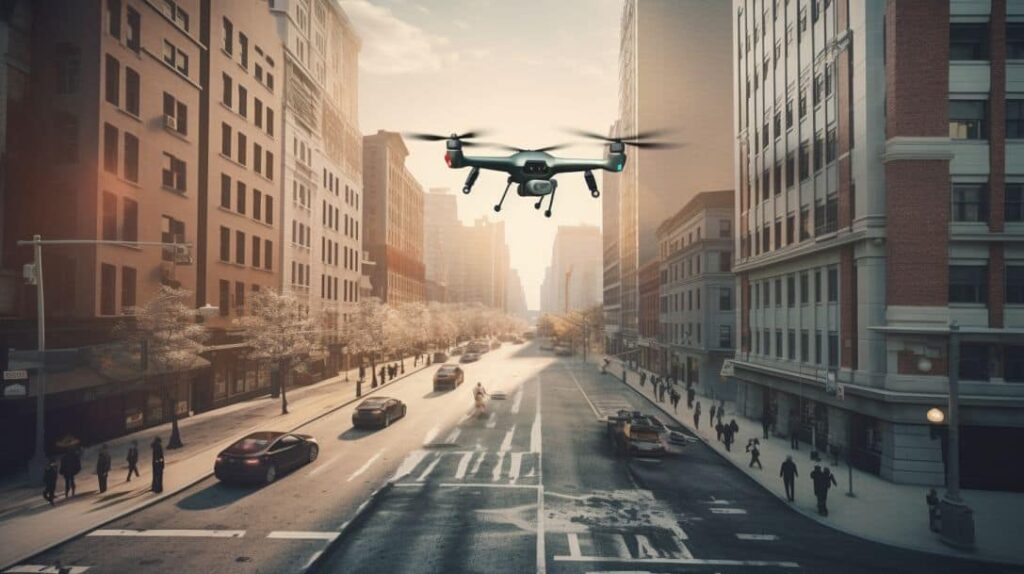
Ongoing technology innovations continue advancing video surveillance, opening new possibilities for security in diverse urban and suburban areas. Understanding these trends helps future-proof investments and strategy.
Expanding Video Resolution and Analytics
Cameras and software analytics will provide increasingly detailed images and environmental awareness:
- 8K video will become mainstream, providing 32MP of resolution compared to today’s 4K cameras.
- Multi-imager cameras featuring four or more sensors will expand the field of view possibilities.
- AI video analytics will better interpret complex scenes, movements and behaviors.
Infrastructure Advances Increase Connectivity
Faster and more flexible networks will improve camera usability:
- 5G will enable high-bandwidth wireless transmission from most areas.
- New cabling materials like composite fiber will hasten deployments.
Embedded Sensors Expand Capabilities
Built-in environmental sensors will supplement the video:
- Air quality sensors will flag leaks, smoke and pollution.
- Noise-detection microphones identify aggressive voices, glass breaking, etc.
Drone and Robotics Integration
Automated mobile monitoring will enhance large-area coverage:
- Aerial drones will autonomously patrol perimeters and inspect sites.
- Robot security guards will physically investigate and respond to incidents.
By understanding the horizon, surveillance solutions can evolve along with technological innovations.
Concluding Thoughts on Optimized Surveillance
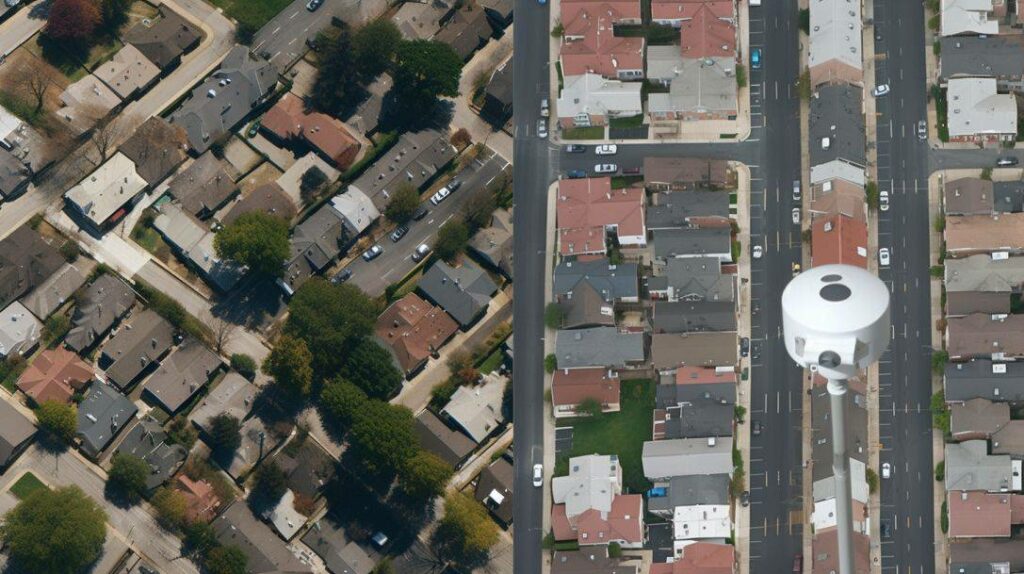
Implementing effective surveillance relies on aligning solutions to the unique priorities and environments found across urban and suburban areas. As we have explored, the core objectives, risks, and physical conditions vary greatly between crowded cities and remote neighborhoods.
By taking a strategic approach, security providers can optimize monitoring technologies, coverage, policies and installation practices specifically for a given setting. This tailored concept of operations is key to balancing meaningful security with responsible oversight.
Ongoing advances will drive new possibilities for enhanced visibility, analytics and connectivity across both urban and suburban spaces. But best practices like needs analysis, community engagement and diligent execution will remain central to surveillance success in any landscape.
With customized solutions and future-forward plans, surveillance networks can become indispensable tools for improving safety while respecting freedoms. The critical first step is understanding your distinct conditions and challenges. This foundation will inform tailored approaches to security that evolve along with innovations on the horizon.
The security experts at Jefferson Security Cameras have over 20 years of experience designing and installing surveillance solutions optimized for Philadelphia’s diverse urban and suburban environments. Their tailored approach starts with an in-depth needs analysis of your specific risks, terrain and objectives. This informs a strategic surveillance plan using the latest technologies to enhance safety while safeguarding against blindspots. Jefferson Security Cameras maintains strong community ties and transparency while staying ahead of innovations to keep clients secured. To explore a customized surveillance solution for your property, call (267) 662-1423 or contact us today for your free site assessment. With Jefferson Security Cameras as your partner, you can implement preventative monitoring tailored to your unique needs and evolving threats.
FAQs
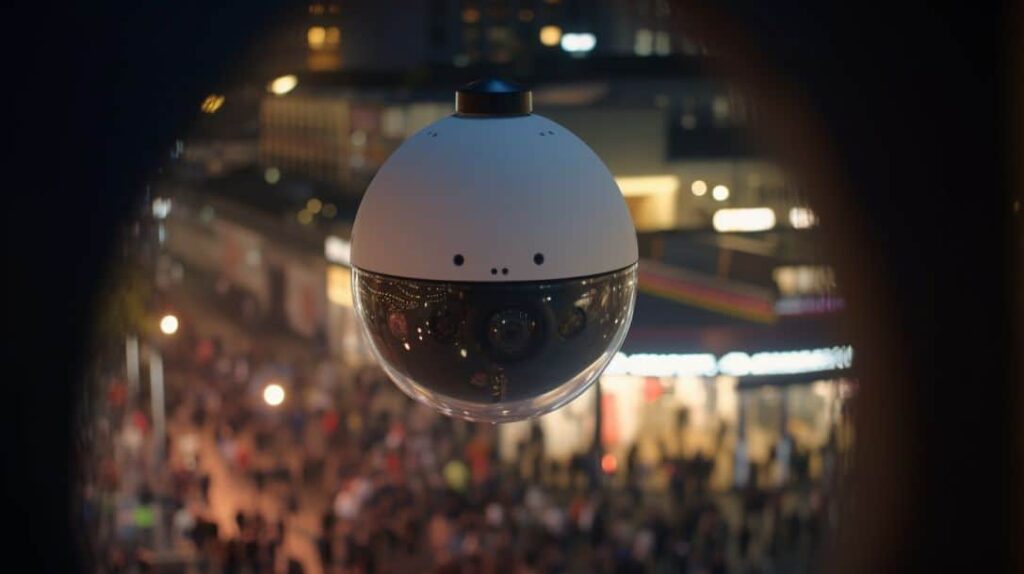
How do you determine the right camera types and counts for an area?
A strategic needs assessment of the property factors like size, entry points, lighting, and crime risks informs ideal camera models and locations to provide adequate coverage without gaps. Megapixel and PTZ cameras often suit lower-density areas.
What strategies maintain surveillance effectiveness outdoors?
Outdoor conditions demand weatherproof cameras in vandal-resistant housings, with supplemental IR lighting to maintain night visibility. Tall poles can elevate views over fences and foliage.
How is camera footage securely accessed remotely?
Remote access requires cameras linked to recorders viewable on mobile apps over secure internet connectivity. Encrypted cloud storage also enables secure footage retrieval.
What insights do video analytics provide?
Smart video analytics like facial recognition, behavior pattern detection, and anomaly alerts help operators proactively identify risks and streamline investigations.
How can businesses balance security with customer privacy?
Strategic camera placements, access controls, using discreet cameras only where essential, having policies limiting data use, and being transparent about monitoring help secure facilities while respecting patron privacy.
